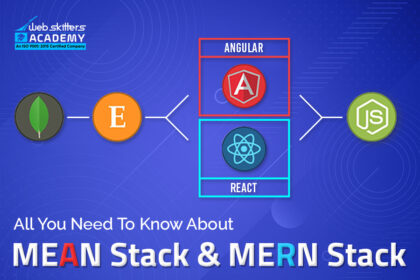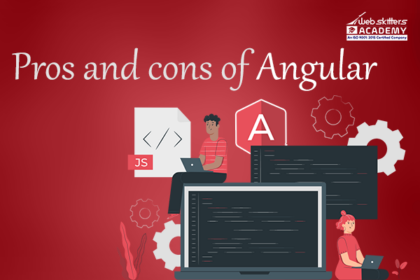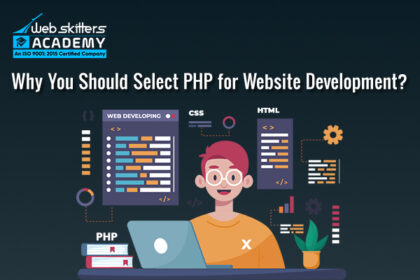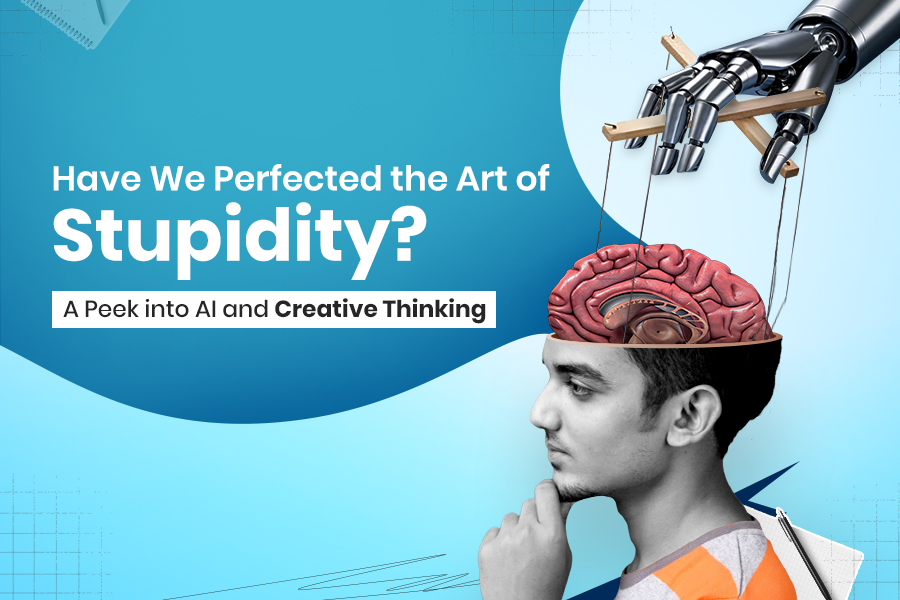
Have We Perfected the Art of Stupidity? A Peek into AI and Creative Thinking
A study by the Massachusetts Institute of Technology found that 83.3% of ChatGPT users didn’t remember any quotes from their work (essays) that they had written a few minutes earlier. This is why it’s essential to discuss AI and creative thinking.
But why did that happen?
That’s because they wrote something using ChatGPT and hit save. In the meantime, their brain forgot what they wrote.
Why?
It’s because the users didn’t write that. ChatGPT thought about it and wrote it.
That’s something to worry about.
Here’s the truth!
AI doesn’t make us stupid, but our overdependence on it does. While excessive AI use weakens creativity and cognitive ability, using it thoughtfully can actually enhance pattern recognition, innovation, and experimentation.
Do you want to learn how to balance the use of AI and creative thinking? You’re at the right place!
Have We Reached the Peak of Human Foolishness?
Is AI really making us stupid?
No, AI doesn’t really make us stupid if we can use it thoughtfully.
While this debate is a hot one on the internet right now, you can’t ignore the fact that robots are writing reports for students.
What’s worse? The teacher can’t even tell the difference between AI-written reports and reports written by the students.
Is that something concerning? We think it should be!
Let’s understand what sets the human psyche apart.
What Sets the Human Psyche Apart?
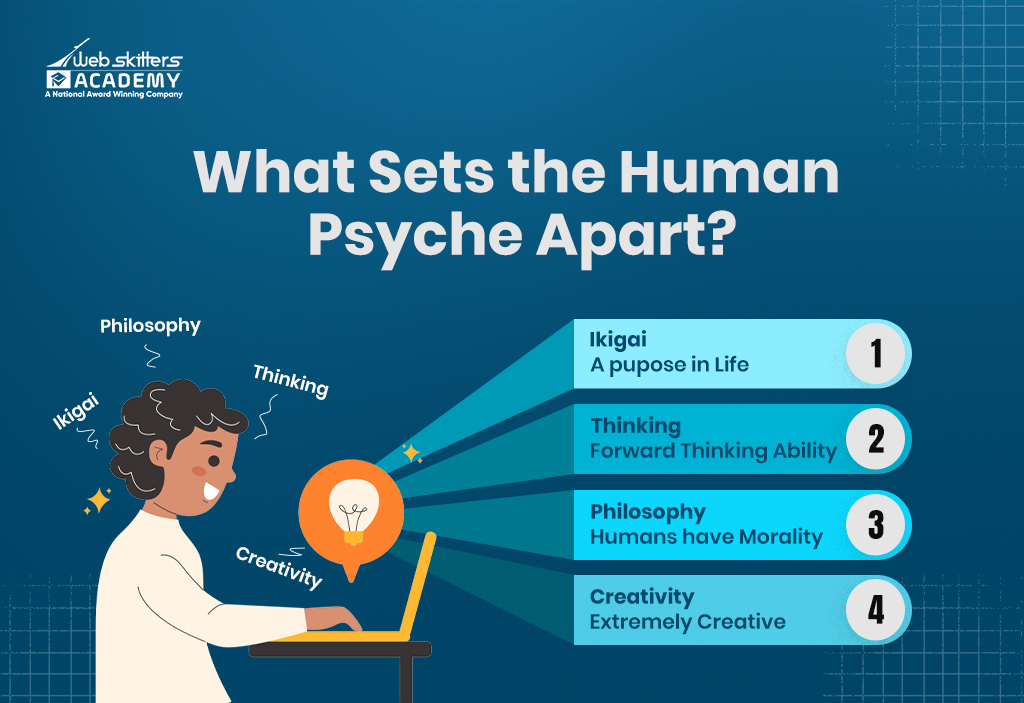
- Humans are supposed to have an ikigai (purpose of life). There’s no other species on the face of the planet that has that.
- Secondly, we have forward thinking. There are no other animal that thinks about the distant future. All they think about is today and now.
- Moreover, we have a sense of morality. We have the capability of differentiating right from wrong.
- Finally, the human psyche is extremely creative. We can think freely and come up with unique ideas.
In essence, we can think critically, which can never be achieved with AI. This is what sets humans apart from other animals and even AI (no matter how intelligent they are).
Why is Creative Thinking Important?
The current generation (Gen Alpha) is becoming more and more dependent on machines for everything they do (even thinking).
That’s concerning!
Why is creative thinking important?
Creative thinking is important because it allows you to go beyond the norm and innovate. It further pushes you to look for different ways through which a problem can be solved.
And, guess what? A study conducted by BCG (Boston Consulting Group) suggests that 83% of senior executives rank innovation among the top three business priorities.
That’s how important creative thinking and innovation are for your career growth.
How does the excessive usage of AI affect creative thinking?
The excessive usage of AI weakens your creative thinking capability. This is due to the fact that your AI dependency kills your creative thinking.
Suppose you have 2 children. Let’s say that they are 9 years old. Out of these two children, one is given tasks that let the child think freely. But that child is not supposed to use Gen AI to complete the tasks.
The other child is given access to Gen AI. Moreover, this child is taught how to use the Gen AI tool (but not taught to use it thoughtfully). The child is also given tasks to complete, and no limit is set on AI usage.
Both of them complete their tasks.
In the end, they are given a creative task which they must complete. The child with the Gen AI access will always fall short of the other child.
Even an MIT study suggested that EEG revealed brain connectivity differences among participants. The participants who didn’t use any external tool exhibited the most distributed and strongest networks.
Moreover, the participants using search engines showed moderate activity. The LLM participants displayed the weakest brain engagement.
So, the cognitive capacity was negatively affected by the use of external tools.
This is how the excessive use of AI hampers our cognitive and creative thinking capabilities.
Any Brightside?
By now, we know that AI can negatively impact creative thinking.
Even a study by Stanford University suggests that research productivity has fallen by 41 times while the research effort has increased by 23 times!
That means innovation is sinking, and we need to generate better ideas.
Some experts believe that AI can help accelerate that innovation.
However, the prevailing view is that AI is incapable of generating new ideas. On the contrary, AI can be a catalyst for human creativity.
All we need to know is how to use AI to support creative thinking.
How does AI help in creative thinking?
AI can help you in creativity by identifying patterns, providing a bigger picture, and guiding experimentation.

Let’s discuss all that in detail.
1. Identifying Patterns
As AI can assess large data sets in a small amount of time, it can inspire you to identify patterns that you may miss. For instance, if you are a researcher, you can use ML (Machine Learning) to predict combinations for a particular task.
It can also give you simpler content from complex data sets.
2. Providing a Bigger Picture
AI can assess large data sets and filter, group, and prioritize important data. In addition, it can create knowledge graphs and help you identify different connections between unconnected data.
Gen AI can help break down complex relationships by going through various resources available on the internet.
3. Guiding Experimentation
AI can even help you guess the outcomes of experiments effectively. It can sort the promising data from the unpromising ones.
For instance, once Rolls-Royce used a specific neural network to create a super alloy. This super alloy was perfect in oxidation, stability, and density. Plus, it was extremely cost-effective.
So, just like everything, AI usage has a substantial bright side if we can use it to our advantage. But we often tend to fall prey to AI dependence. This is detrimental for students, academics, and professionals alike.
Hence, no, we haven’t reached the peak of human foolishness. We are only fools if we are too dependent on AI for all our creative ideas.
Let’s look at some of the data that talks about AI and creative thinking.
What Does the Data Suggest about AI and Creative Thinking?
In this section, we will discuss two reports. One report was published by the MIT (Massachusetts Institute of Technology) and the other by Harvard.
We will explore two different aspects of AI usage and its effects on students.
The first study was conducted by researchers at MIT.
For long, the teachers of schools and colleges have stressed the need to stop using LLMs or Generative AI to help with essays, ideas, and other academic activities.
According to them, Gen AI content is plaguing the academic space.
The study by MIT provided this viewpoint with the required validity.
Three groups were made out of all the participants: LLM users, Search Engine Users, and Brain-only users with no tools.
Their cognitive load was analysed by EEG across three essay-writing sessions.
What were the key findings of the MIT study on AI and creative thinking?

- The LLM users showed minimal brain connectivity. On the other hand, the Search Engine users showed moderate engagement. The Brain-only participants showed the strongest brain connectivity. So, the cognitive activity was negatively affected by the increase in tool usage.
- The LLM users were unable to quote their own work. This showed that they didn’t even consider the work to be their own but LLM’s.
- The LLM participants showed limited linguistic, behavioural, and neural levels. This impacts the long-term educational implications.
Now let’s talk about another study by Harvard researchers.
This Harvard study is more of a survey. This study goes by the title “Teen and Young Adult Perspectives on Generative AI,” in which 1500+ teens (in the age range of 13 to 17) were asked open-ended questions.

Here’s what the Harvard study on AI and creative thinking found:
- While some use Gen AI to cheat, many reported that they had a positive academic experience using Gen AI. AI was called a modern learning approach by the participants.
- 51% participants said that they use AI at some point, while 4% said they use Gen AI regularly.
- 53% of them said Gen AI was used for information gathering, and 51% said that AI helps them brainstorm.
- The participants also highlighted the increased potential for creativity by using Gen AI. 31% of those surveyed said they generate images with Gen AI, while 16% and 15% said they make music and code, respectively.
These two studies hint at the dark side and bright side of AI in cognitive and creative thinking.
Why AI and Creativity are a Perfect Duo?
We are only stupid if we are blindly following AI for creative solutions.
Remember, it’s not AI vs creative thinking but a blend of AI and creative thinking that delivers exceptional outcomes.
It’s all about collaboration, not competition.

1. Innovation and Problem Solving with AI
Let’s suppose innovations by AI supersede or get at par with human creativity in certain situations. The most logical step after that is to integrate AI innovations with human creativity, right?
If we do this, we can imagine a future where the Gen AI takes the first go at the problem. Then, it is refined by human assessments, adding a touch of authenticity to it.
This means a perfect blend of computational capabilities with a human touch for intuitive innovations that have never been seen before.
2. Artistic Expressions
When it comes to artistic expressions, AI can help you improve those. AI platforms like DALL-E can give you different ways to express yourself.
This way, you can turn prompts into visual art. Tools like DALL-E and Soundraw can help you bring your abstract ideas to life.
Therefore, if you want to go for a Web Design Course, knowing the AI tools can help you bring your artistic ideas to life.
3. Brainstorm Ideas for Coding and Web Development
You must have heard of vibe coding. It lets you explain your digital product and gives a code according to your needs.
Although these codes are not that secure, you can work on them and refine them further.
Simply Gen AI can help you get started. This can help you overcome the creative block and inspire you.
Remember, these Gen AI tools are not for replacing your creative thinking. They are just a way to ideate and start.
So, enrolling in courses like React Native Course with AI or Python and Django Framework Course with AI can help you get an idea about how to use AI for your development projects.
Yes, the risk of AI limiting your creativity is real. However, if you can use the AI tool sparingly, you will be fine.
AI is your friend only if you don’t get too attached to it. Once you get too dependent, it will certainly kill your creativity.
So, the correct approach is to take advice from AI (just like a trusted friend) and then continue to carry out your task in your own way without relying too much on AI.
If you follow this approach, the outcome will be thoughtful, authentic, and meaningful.
Let the Blend of AI and Creativity Flow the Magic in You!
AI is transforming the ways in which students learn and express themselves. It can certainly boost your creativity through its innovative tools and brainstorming capabilities.
It is also important for you to stay active and use AI with a clear objective. There should be no intention to create everything with AI, but take help from it.
Your creative thinking will outshine others only if you mix technology with your creative ideas, unique voice, and unending curiosity.
AI and creative thinking should go hand in hand. But the usage of AI should be restricted to a minimum. On the other hand, you should concentrate more on your creative thinking.
IT training institutes like Webskitters Academy understand this. So, we take a proactive approach to teach students how to think creatively while providing them with the knowledge to use relevant AI tools in the process.
Do you want to learn more about how to boost your AI and creative thinking skills? Book a call with us and let us help you reach your highest potential.
Search
I Want to Learn...
Category
Explore OurAll CoursesTransform Your Dreams
into Reality
Subscribe to Our Newsletter
"*" indicates required fields
 Independence Day Offer | Upto 20% Discount on all course fees
Independence Day Offer | Upto 20% Discount on all course fees 
